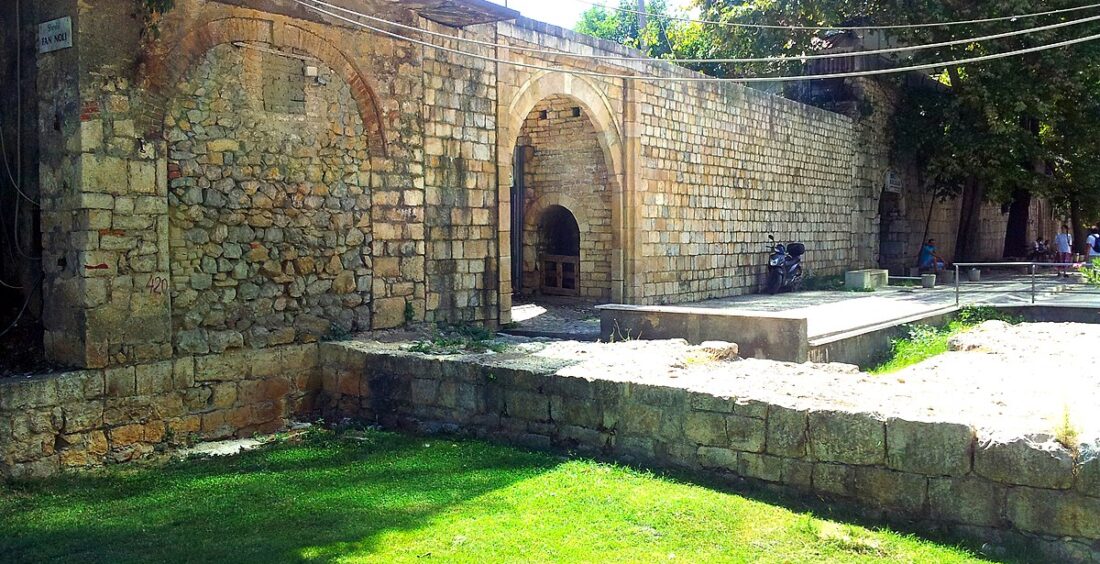The castle dates back to the Early Byzantine Period (4th to 6th century). It might have been built or rebuilt by Emperor Justinian I in the 6th century. The castle had a rectangular plan with round corner towers and square wall towers. The current fortification has three known towers. The walls, 6 meters (20 ft) high, are remnants from the Byzantine and Ottoman eras. The recently uncovered wall foundations are incorporated into the pedestrian Murat Toptani Street. A mosaic commemorating Albania’s 100th Independence Anniversary is located near the Parliament.
The castle served as a crossing point for main east-west and north-south roads, forming the heart of Tirana. It has historical significance as a monument of culture, declared a first-category cultural monument on 10 June 1973. The new tracks of walls were also declared cultural monuments on 15 May 2008.
Since December 2018, the castle has been open for visitors. The “Old Bazaar,” a blend of tradition and modernity, features souvenir shops, traditional restaurants, and cultural spaces. Visitors can explore restaurants, hotels, and cultural institutions within the fortified walls. A new road is being built to improve access to the castle, connecting it with “Unaza” and “Elbasan Street.”
The Fortress of Justinian, or Tirana Castle, holds significant cultural, historical, and economic value. As a remnant of the Byzantine and Ottoman periods, it serves as a bridge between the past and present. The preservation and restoration efforts ensure that this important landmark remains a vital part of Tirana’s heritage for future generations.









 Rruga e Elbasanit, Pallati nr. 111,
Rruga e Elbasanit, Pallati nr. 111,